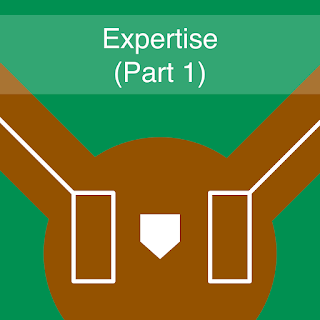Learning By Doing
Let's play a game. It's super fun...I promise! Download and print this file. Your goal is to cross out all of the lower case d's with two dots above it. Try to be as fast and accurate as possible. Don't forget to time yourself. Ready? Go! [1]
Back to the Front
Stop me if you've heard this one. The left hemisphere of your brain is responsible for logical processing; the right hemisphere is designed for creative and wholistic thinking. While there may be a tiny grain of truth to these over-generalizations, there is a much less talked about difference in brain functioning. As you go from the back of the brain to the front, thinking goes from extremely concrete to highly abstract.
That's right! The very back of your brain is reserved for visual processing and low-level muscle control. But as you move forward, toward your forehead and eyes, thinking becomes much more complex. This is the location of higher-order thinking skills such as planning, organizing, and problem solving. This area of the brain called the pre-frontal cortex. This is where you will find executive functioning.
Executive function includes several different cognitive processes. They include, but are not limited to, working memory, response suppression, and attentional focus.
Working Memory
Baddeley's model of working memory features three components (see Fig. 1). There are two slave systems — the visuospatial sketchpad and the articulatory loop — and a central executive. The central executive controls the operation of the slaves systems. It can store and retrieve information from each slave system, and it can also re-represent the same piece of information in different forms (e.g., translating a piece of an image into a word, or vice versa).
In other words, the central executive must make decisions about the relevance of information and how best to represent it. It must also decide which information needs to be refreshed and maintained in working memory and which information can be safely discarded.
Figure 1. Baddeley's model of working memory.
Response Suppression
We all know how difficult it is for some people to suppress the urge to respond in certain situations. Below are several examples of response suppression, categorized by the domains in which they were found:
Popular Culture: Response suppression
failure has made its way into movies (e.g., Roger Rabbit cannot contain himself when faced with the old "
shave and a haircut trick") and games. In a previous post on
Ironic Processing, we talked about the frustration inherit in the game of
Taboo!.
Psychology: We also see examples of response suppression in the materials used in cognitive psychology. The
Stroop task is a classic example because, in one variant of the task (i.e., when the color of ink and word
conflict), you must suppress the urge to read the word and name the color of ink.
Neuroscience: The frontal lobe (i.e., the seat of executive functioning), is responsible for response suppression. There is a really interesting example from neuroscience where
Phineas Gage had his fontal lobe damaged. After his accident, he became something of a jerk. His behavior
strongly suggested that he could not suppress his urges.
Classroom: Response suppression in the classroom is very real, and it can take on many different forms. Behaviorally, little kids (eventually) learn that they must raise their hand before blurting out the answer to the teacher's question.
- A bat and a ball cost $1.10 in total. The bat costs $1.00 more than the ball. How much does the ball cost? _____ cents
When confronted with a question like this, you may feel the need to suppress your intuitive answer (10 cents) and apply your knowledge of algebra to determine the answer ((b+100) + b = 110). In this case, the fast answer isn't the right answer [2].
Attentional Focus
In a previous post, we talked about the "
myth of multitasking." Most people think they can do multiple things at once, but there are
severe limitations. You might be able to walk, talk, and chew gum, but you won't be able to listen to a lecture, deeply process the contents, and simultaneously take notes. People are serial processors (as opposed to "parallel processors"). A useful metaphor for attention is that it is a spotlight, and it can only shine on one thing at at time.
As serial processors, we need to make decisions about which stimuli to pay attention to. This is where executive functioning comes into play. When an alert goes off on our phone, we have to decide to pay attention to it (or not). Unfortunately, that "decision" isn't really a decision anymore. Over time, we become conditioned to immediately abandon what we were thinking about and look at our phone. In other words, we have trained our attentional system to give our phone primary status. Ideally, we would structure our learning environment so that it removes unnecessary distractions. Keeping cellphones on "Do not disturb" mode and out of view is the best way to prevent our attention from being captured.
Attentional distraction can also be internally generated. For example, if you are a minority, and you are reminded of your minority status, perhaps because of an off-hand comment or some other feature in the environment (i.e., you are the only one of your group), then those distracting thoughts can pull attention away from the task at hand. This phenomenon is called stereotype threat, and it has pernicious effects on performance [1].
The final example of attentional focus is on information within a task. Suppose you are asked to solve the following problem:
Derek has 4 action-adventure video games and 9 board games. Desi has 3 role-playing video games and 2 lawn games. If they combine their games, how many video games do Derek and Desi have?
Notice that this problem has some very tempting, but completely irrelevant, information. One skill that students need to learn is to ignore the distracting information as they solve the problem. Some teachers might recommend highlighting the relevant information (or crossing out the irrelevant information). The goal is to help the attentional system stay focused on the relevant bits.
The Classroom Connection
How can we structure the classroom environment to support the development of executive functioning? Here are a few recommendations:
- We should strive to limit the number of distractions in the classroom. Put smartphones away and out of sight.
- If the mode of instruction is primarily a lecture, then tell your students not to take notes during the lecture [2]. Instead, ask that they listen to what you are saying. After class is over, students should then be given a chance to write down everything they remember. I assume this is a controversial recommendation, so expect students to push back.
- Response suppression and attentional focus are both skills that can be learned. One way to develop these skills is mindfulness training, which is starting to gain some empirical support [4].
In summary, executive function is a critical component to higher-order thinking and reasoning. In other words, it definitely deserves the corner office!
Share and Enjoy!
Dr. Bob
Going Beyond the Information Given
[1] This "game" is a test of executive function because you have to hold in working memory the symbol-to-match. The stimuli were created to be highly confusable; therefore, you must suppress certain responses (e.g., the "d" with only a single dot above it, or a "d" with two dots below it). I heavily borrowed the design from the "d2" test of executive function: Lyons, E. M., Simms, N., Begolli, K. N., & Richland, L. E. (2018). Stereotype threat effects on learning from a cognitively demanding mathematics lesson. Cognitive science, 42(2), 678-690.
[2] The "intuitive" versus "algebraic" answer is a good example of the distinction Daniel Kahneman makes in his book Thinking, Fast and Slow.
[3] I was fortunate enough to take a course from Herbert A. Simon. He didn't let us take notes during his lectures precisely because we are serial processors. In other words, he applied the findings from cognitive science (a field he helped start!) to his own class.
[4] Bellinger, D. B., DeCaro, M. S., & Ralston, P. A. (2015). Mindfulness, anxiety, and high-stakes mathematics performance in the laboratory and classroom. Consciousness and cognition, 37, 123-132.




















